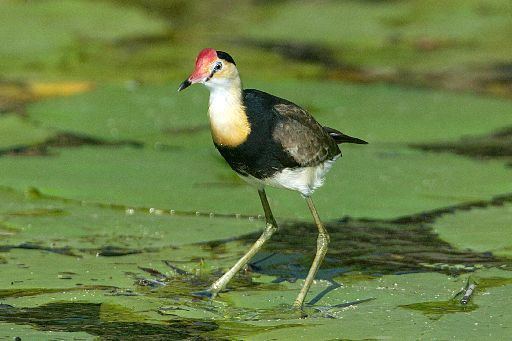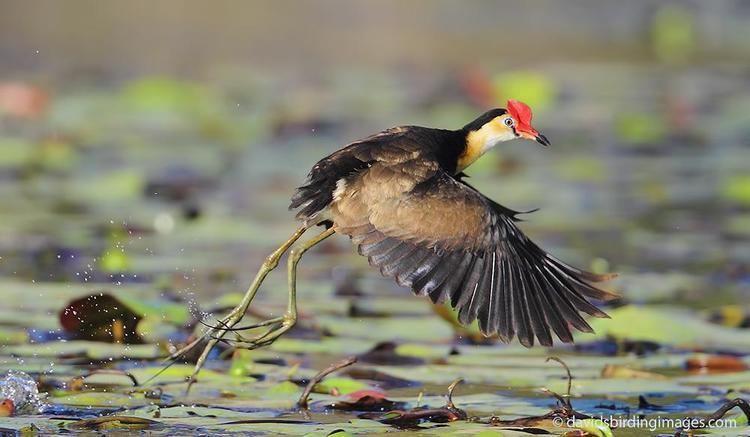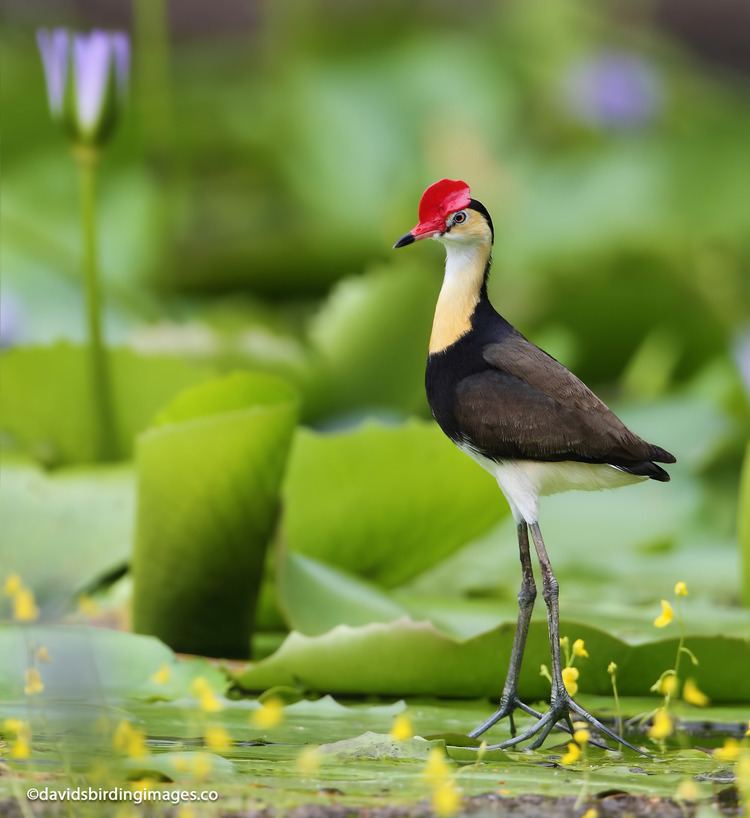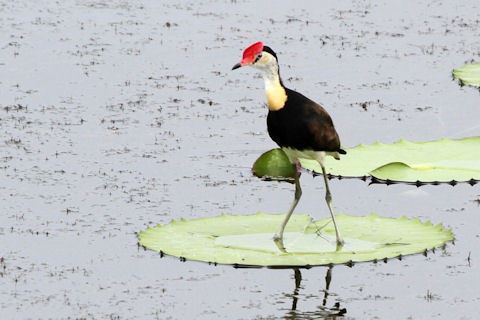Scientific name Irediparra gallinacea Higher classification Irediparra Order Shorebirds | Family Jacanidae Phylum Chordata Rank Species | |
 | ||
Genus IrediparraMathews, 1911 Similar Jacana, Green pygmy goose, Wandering whistling duck, Australasian darter, Nankeen night heron | ||
Comb crested jacana
The comb-crested jacana (Irediparra gallinacea), also known as the lotusbird or lilytrotter, is the only species of jacana in the genus Irediparra. Like other jacana species, it is adapted to the floating vegetation of tropical freshwater wetlands.
Contents
- Comb crested jacana
- Comb crested jacana walking on waterlilies
- Description
- Distribution and habitat
- Breeding
- Feeding
- Voice
- References

Comb crested jacana walking on waterlilies
Description

This species is unmistakable. It has a black crown and hindneck with a fleshy red wattle covering the forehead and forecrown, contrasting with a white face and throat. There is a broad black band on the lower breast with white belly. Underwing black. Back and upperwing mainly grey-brown with black primary coverts, rump and tail. Long legs with extremely long toes. The male is slightly smaller than the female and measures 20–22 cm (7.9–8.7 in) in length and weighs 68–84 g (2.4–3.0 oz). The female measures 24–27 cm (9.4–10.6 in) in length and weighs 120–150 g (4.2–5.3 oz). The wingspan ranges from 39 to 46 cm (15 to 18 in).
Distribution and habitat

The bird occurs in south-eastern Borneo, the southern Philippines, Sulawesi, Moluccas, Lesser Sunda Islands, New Guinea, New Britain, and northern and eastern Australia. Its habitat is freshwater wetlands with abundant floating vegetation, such as water-lilies or water hyacinth, forming a mat on the water surface.
Breeding
The comb-crested jacana is polyandrous. It builds a flimsy nest on floating or emergent vegetation, in which the female lays four lustrous, pale brown eggs covered by black markings. Only males incubate. The young hatch well-developed and soon leave the nest.
Feeding
It eats seeds and aquatic insects gleaned from floating vegetation or the water surface.
Voice
This species gives a squeaky, high-pitched chittering.
